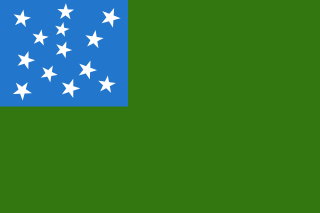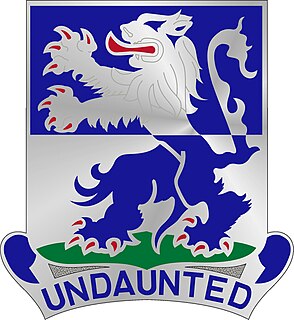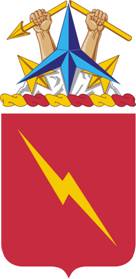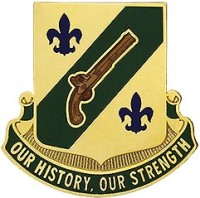
The Vermont Military Crest was first used in the coats of arms of units of Vermont state regiments, and later by the Vermont National Guard, as granted by the precursor organizations of what is now the United States Army Institute of Heraldry. The official Institute of Heraldry blazon describes the crest as follows: "A buck's head erased within a garland of pine branches all proper." The pine badge is also called a Vermonters badge, and was worn by citizens as a symbol of Vermont identity during the period of the Vermont Republic, by Vermont's military regiments at the Battle of Plattsburg, and through the U.S. Civil War. The crest is based upon the crest found on the coat of arms of Vermont. The design of the Vermont military crest is the source of the nickname for Vermont National Guard officers and enlistees, both male and female, as "Vermont Bucks."

The United States Army Institute of Heraldry, also known as The Institute of Heraldry (TIOH), furnishes heraldic services to the U.S. Armed Forces and other U.S. government organizations, including the Executive Office of the President. The activities of the institute encompass research, design, development, standardization, quality control, and other services relating to official symbolic items—seals, decorations, medals, insignia, badges, flags, and other items awarded to or authorized for official wear or display by government personnel and agencies. Limited research and information services concerning official symbolic items are also provided to the general public. The Institute of Heraldry is located at Fort Belvoir, a military installation within the metropolitan area of Washington, D.C. The staff consists of thirty-two civilians.

In heraldry and heraldic vexillology, a blazon is a formal description of a coat of arms, flag or similar emblem, from which the reader can reconstruct the appropriate image. The verb to blazon means to create such a description. The visual depiction of a coat of arms or flag has traditionally had considerable latitude in design, but a verbal blazon specifies the essentially distinctive elements. A coat of arms or flag is therefore primarily defined not by a picture but rather by the wording of its blazon. Blazon also refers to the specialized language in which a blazon is written, and, as a verb, to the act of writing such a description. This language has its own vocabulary, grammar and syntax, which becomes essential for comprehension when blazoning a complex coat of arms.

The Vermont Republic is a term used by historians to refer to the government of Vermont that existed from 1777 to 1791. In January 1777, delegates from 28 towns met and declared independence from the jurisdictions and land claims both of the British colony of Quebec and of the American states of New Hampshire and New York. They also abolished adult slavery within their boundaries. Many people in Vermont took part in the American Revolution, although the Continental Congress did not recognize the jurisdiction as independent. Because of vehement objections from New York, which had conflicting property claims, the Continental Congress declined to recognize Vermont, then known as the New Hampshire Grants. Vermont's overtures to join the Province of Quebec were accepted by the British, offering generous terms for the Republic's reunion. When the main British army surrendered in 1781, however, American independence became apparent. Vermont, now surrounded on three sides by American territory, rejected the British overtures and instead negotiated terms to enter the United States. In 1791, Vermont officially joined the United States as the 14th state.













